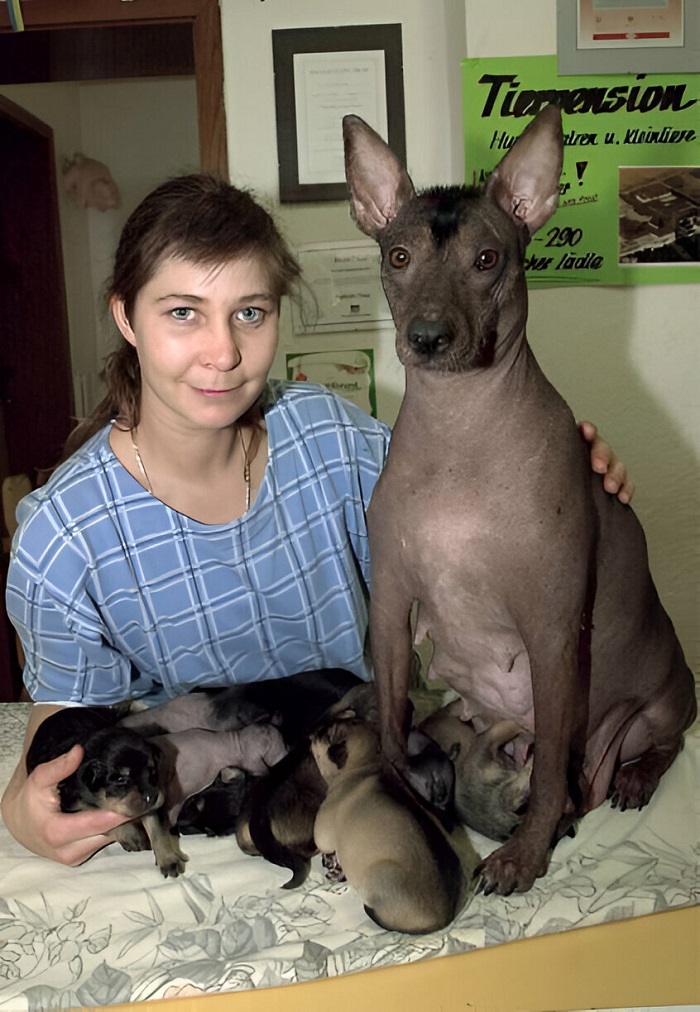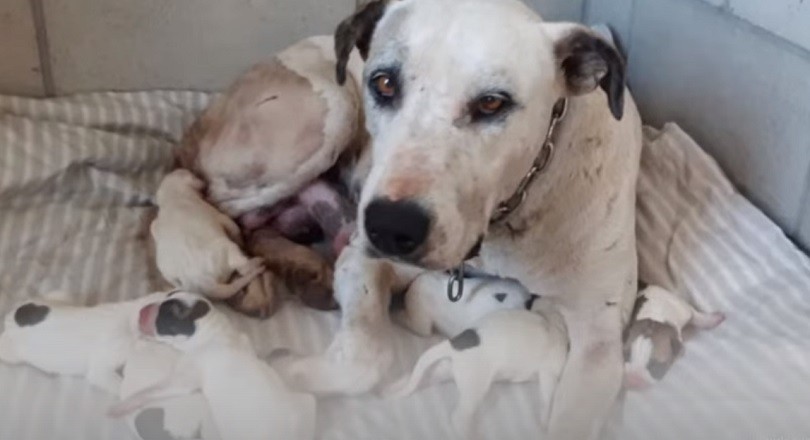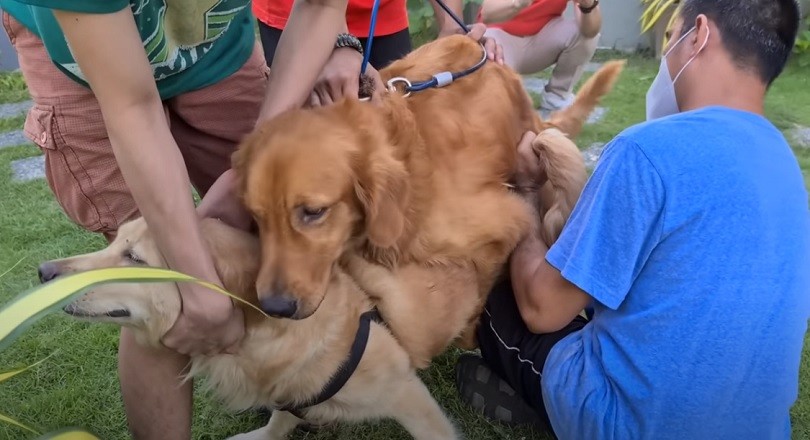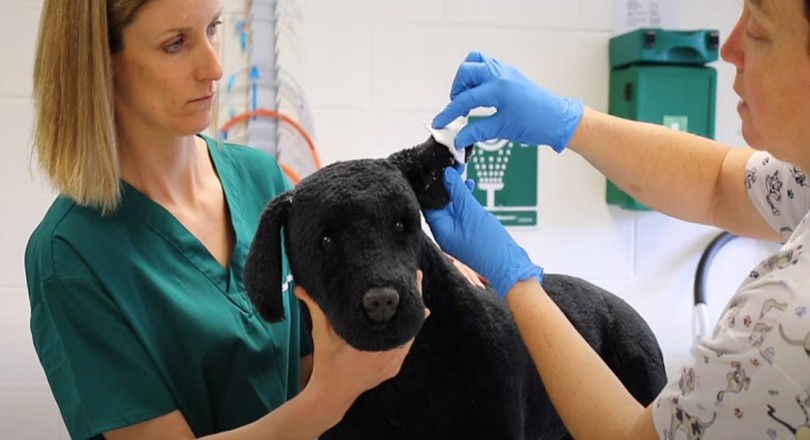Last Updated on February 28, 2025
Your dog is panting after giving birth due to physical exertion and hormonal changes. This is a normal response to labor.
Panting is common in dogs after giving birth. It helps them cool down after the strenuous activity of labor. Hormonal changes also contribute to increased panting. These changes help the dog’s body adjust to the new demands of nursing and caring for puppies.
Stress and anxiety about the new litter can also cause panting. If panting continues excessively or is accompanied by other symptoms like lethargy or fever, consult a veterinarian. It’s essential to ensure your dog is comfortable and has access to water and a quiet, safe space. This helps her recover and care for her puppies effectively.
Postpartum Panting In Dogs

After giving birth, it’s common for dogs to show various behavioral changes. One such behavior is panting. This can be alarming for new pet owners. Understanding the reasons behind this panting can help ensure your dog’s well-being.
Normal Behavioral Changes
Many dogs will pant more after giving birth. This is often due to the physical and emotional stress of labor. Panting helps regulate their body temperature. They may also want to deal with anxiety or pain.
Here are some common behavioral changes:
- Increased thirst
- Frequent grooming of puppies
- Reduced appetite
- Restlessness
These behaviors are usually normal. They are part of the postpartum recovery process. Always keep an eye on your dog for any unusual symptoms.
Hormonal Shifts And Their Effects
After giving birth, a dog’s body undergoes significant hormonal changes. These shifts can cause various physical and emotional reactions. Hormones play a crucial role in the recovery process.
Here are some key hormones involved:
| Hormone | Effect |
|---|---|
| Oxytocin | Promotes bonding with puppies |
| Prolactin | Stimulates milk production |
| Estrogen | Regulates mood and energy levels |
These hormonal changes can lead to increased panting. It is a way for the body to cope with these shifts. Monitoring your dog’s behavior can provide insights into their health.
Recognizing Potential Complications
After your dog gives birth, it’s important to monitor her health closely. Panting can be normal, but sometimes it signals potential complications. Understanding these signs helps ensure your dog’s well-being.
When To Worry About Excessive Panting
Excessive panting after birth can be a sign of distress. Monitor the frequency and intensity of your dog’s panting. Normal panting should not last for hours. If it does, there might be a problem.
- Panting that lasts more than an hour
- Heavy, labored breathing
- Panting accompanied by other symptoms like vomiting
If you notice any of these signs, consult your vet immediately. Quick action can prevent serious health issues.
Signs Of Post-birth Problems
Besides painting, there are other signs to watch for. These may indicate post-birth complications. Recognize these symptoms early to keep your dog safe.
| Symptom | Description |
|---|---|
| Fever | Body temperature over 102.5°F |
| Unusual Discharge | Foul-smelling or colored discharge |
| Lethargy | Extreme tiredness and weakness |
| Lack of Appetite | Refusing to eat or drink |
If your dog shows any of these symptoms, seek veterinary care. Prompt attention can make a big difference in her recovery.
Ensuring Mother Dog’s Comfort And Health
After giving birth, your dog may show signs of panting. This is normal, but you should ensure her comfort and health. Panting could be due to several reasons. These include stress, pain, or the effort of giving birth. Ensuring a calm environment and providing proper care is crucial.
Creating A Calming Environment
Create a quiet and comfortable space for your dog. This helps reduce her stress. Use soft bedding and ensure the area is warm but not too hot. Keep the space clean and free from loud noises. Your dog needs to feel safe and secure with her puppies.
- Use a quiet room away from household traffic.
- Provide soft and clean bedding.
- Maintain a comfortable room temperature.
- Ensure the area is free from loud noises.
Essential Postpartum Care Tips
Proper care is essential for your dog’s health. Here are some tips:
- Monitor her temperature: A normal range is between 101°F and 102.5°F. Any deviation could indicate a problem.
- Hydration: Ensure she drinks plenty of water. This helps her stay hydrated, especially if she’s nursing.
- Nutrition: Provide high-quality food that meets her nutritional needs. She needs extra energy to nurse her puppies.
- Rest: Allow her to rest as much as possible. This helps her recover quickly.
- Regular check-ups: Schedule visits with the vet to monitor her health.
| Care Aspect | Details |
|---|---|
| Temperature | 101°F to 102.5°F |
| Hydration | Plenty of fresh water |
| Nutrition | High-quality food |
| Rest | Allow ample rest time |
| Vet Check-ups | Regular visits |
By following these tips, you can help ensure your dog’s health and comfort after giving birth.

Frequently Asked Questions
Why Is My Dog Panting After Nursing?
Your dog pants after nursing to cool down, manage stress, or due to dehydration. Ensure she has water and a comfortable environment.
How Do I Know If My Dog Is OK After Giving Birth?
Ensure your dog is eating, drinking, and nursing her puppies. Check for signs of pain or distress. Monitor her temperature and behavior. Consult a vet if you notice anything unusual.
How Do I Know If My Dog Has Milk Fever?
Signs of milk fever in dogs include restlessness, panting, muscle tremors, and weakness. Immediate veterinary attention is crucial.
What To Expect After A Dog Gives Birth?
Expect the mother dog to rest and nurse her puppies. Monitor for bleeding and signs of infection. Ensure she has a quiet space. Keep puppies warm and fed. Watch for any health issues in both mother and puppies.
Why Is My Dog Panting After Giving Birth?
Panting is common due to stress, pain, or hormonal changes after giving birth.
Conclusion
Understanding why your dog is panting after giving birth is crucial. It helps ensure her health and comfort. Monitor her closely for signs of distress. Always consult your vet for advice. Proper care can make a significant difference. Your dog deserves the best postpartum care.
Thank you for reading!




